A well-decorated nightstand plays a crucial role in enhancing the overall aesthetics of a bedroom, serving as both a functional surface and a decorative element. The way you choose to style your nightstand can impact the mood and appearance of your space, providing a perfect opportunity to combine personal flair with practicality. Striking the right balance between functionality and style is essential, as your nightstand must accommodate items like lighting, books, and personal touches while still looking visually appealing.
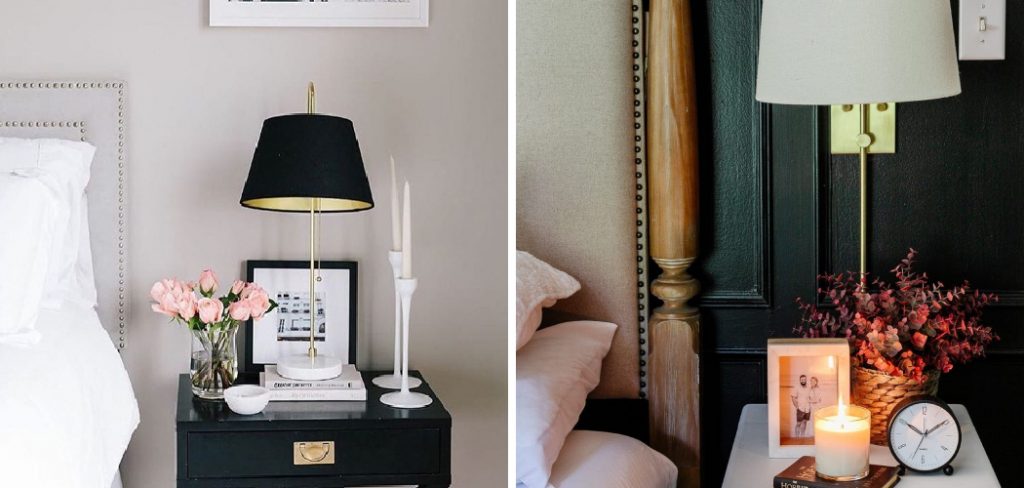
This guide provides a comprehensive overview of how to decorate nightstand, outlining key steps such as choosing a theme or style, selecting a color scheme, incorporating essential elements, and adding decorative accessories. By considering these elements, you can create a nightstand that is not only useful but also a beautiful focal point in your bedroom.
Choosing a Theme or Style
To begin decorating your nightstand, it’s essential to identify your bedroom’s overall style, as this will guide the theme you choose for your nightstand decor. Common bedroom styles include modern, rustic, minimalist, and eclectic. For a modern bedroom, sleek lines and metallic accents can be ideal, while rustic styles favor natural materials and warm tones. Minimalist decor focuses on simplicity, often using neutral colors and limited accessories, while eclectic styles allow for the creative mixing of various elements and textures. Regardless of your chosen style, ensure that your nightstand items harmonize with your bedroom’s other furnishings and decor, creating a cohesive aesthetic that reflects your personality.
Next, a color scheme is key to achieving color harmony in your bedroom. The colors of your nightstand decor should complement the bedroom’s existing palette, contributing to a unified look and feel. Consider a monochromatic scheme for a serene vibe, or opt for complementary colors to create visual interest. When in doubt, draw inspiration from the bedding or wall colors to guide your choices, ensuring that every item on your nightstand collaborates seamlessly with the bedroom’s overall design.
How to Decorate Nightstand: Essential Elements for a Nightstand
Lighting
A bedside lamp or sconce is an essential component of any nightstand setup, offering both illumination and style. It provides light for reading or navigating your space at night and adds a decorative element that can enhance your bedroom’s aesthetic. When choosing the right size and style of lighting, consider the overall scale of your nightstand and the height of your bed; a larger lamp may be needed for a tall bed, while smaller options might work better on a compact nightstand. Additionally, select a lamp that complements your chosen theme, whether that’s sleek and modern or warm and rustic, to create a harmonious look.
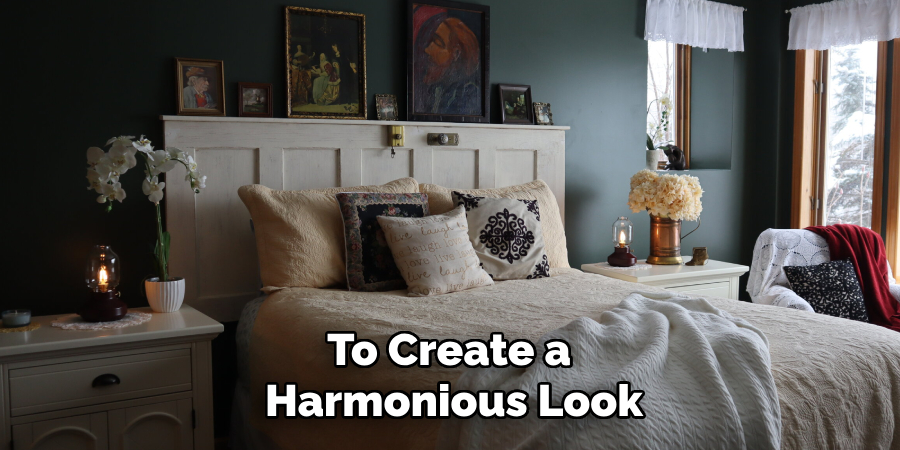
Clock
A clock is a practical addition to your nightstand, combining functionality with decorative appeal. It allows you to keep track of time without relying on your phone, promoting a refreshing separation from technology. Opt for a stylish clock that resonates with your decor style, adding character to your space.
Personal Touches
Incorporating personal items like photos or mementos on your nightstand adds warmth and individuality to your decor. These touches enhance the overall atmosphere, making your space feel more personalized. However, it’s essential to strike a balance—avoid overcrowding by selecting key pieces that complement the overall decor.
How to Decorate Nightstand: Adding Functional Items
Integrating functional items alongside decorative elements is essential to create a practical and visually appealing nightstand. This ensures that your nightstand not only looks great but also serves its purpose effectively.
Books and Reading Material
Including books and magazines on your nightstand can invite relaxation and stimulate the mind. To arrange them effectively, stack a few horizontally while displaying others vertically for a dynamic look. Consider choosing books with attractive covers that align with your color scheme or theme. Using aesthetically pleasing bookends or magazine holders can help keep your reading material organized, preventing clutter while adding a stylish touch. This approach not only enhances the visual appeal but encourages you to pick up a book before bed, creating a calming nighttime routine.
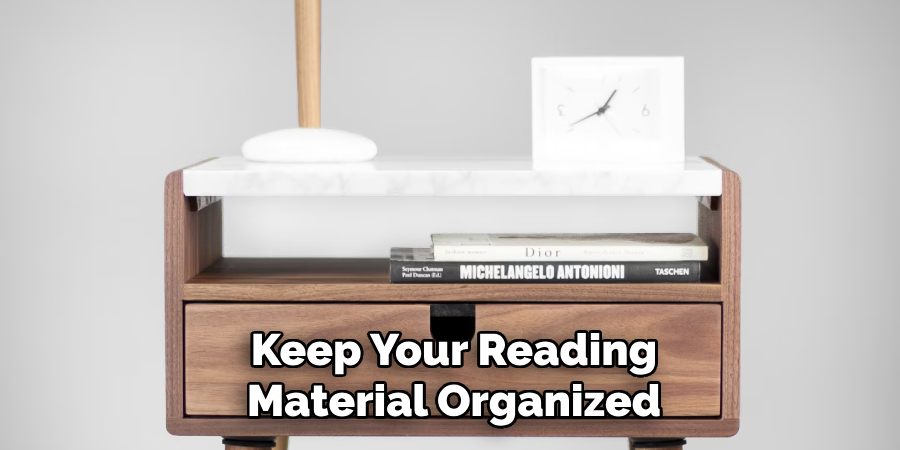
Storage Solutions
Utilizing trays or small boxes on your nightstand can significantly improve organization for smaller items. These containers can keep essentials like glasses, lip balm, or journals tidy and accessible. Opt for decorative trays that match your decor style to maintain a cohesive look. Additionally, small boxes can be used to store miscellaneous items, ensuring your nightstand remains clutter-free while still being functional. Consider using a tiered stand for added vertical storage to maximize space, making it easy to find what you need without sacrificing aesthetics.
Technology
In today’s digital age, managing cables and chargers for electronic devices is crucial for a tidy nightstand. Invest in attractive cable holders or organizers to keep cords neat and untangled. This not only enhances the appearance of your nightstand but also facilitates easy access to devices when needed, promoting an organized space.
Decorative Accessories
Incorporating decorative accessories into your nightstand design adds layers of visual interest and enhances the overall aesthetic. While these accessories should complement your selected theme, they also provide opportunities for creativity and expression.
Greenery and Flowers
Adding plants or flowers to your nightstand brings a refreshing touch of nature into your bedroom. Not only do they enhance the ambiance, but they also contribute to improved air quality and a sense of well-being. When selecting greenery, consider low-maintenance options like succulents or peace lilies that thrive in minimal light and require little care. For arrangements, choose a simple vase that matches your decor, and opt for a single type of flower or plant for a cohesive look. The delicate touch of greenery can help create a tranquil space that feels alive and inviting.
Art and Decorative Objects
Incorporating small art pieces or decorative objects can elevate the look of your nightstand. Whether it’s a framed photograph, a miniature sculpture, or a unique trinket, these items can infuse personality into the space. Aim for a balance when displaying decorative items—group them in odd numbers and vary their heights to create visual intrigue, but be cautious not to overcrowd the surface. Leaving some negative space can enhance the overall appeal and make each piece stand out more prominently.
Candles and Scents
Using candles or diffusers is an excellent way to create ambiance and introduce soothing fragrances to your bedroom. Opt for scents that promote relaxation, such as lavender or chamomile, to enhance your nighttime routine. When choosing candles, consider varying heights and styles to add dimension while keeping the design cohesive.
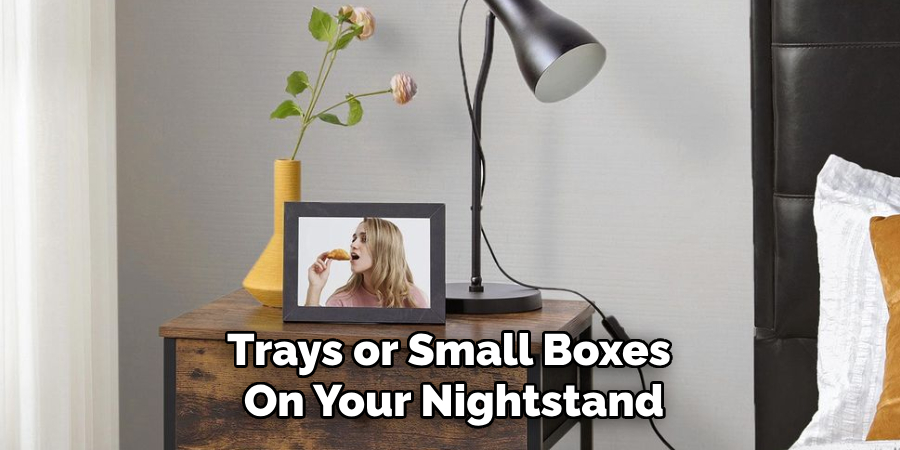
Arranging and Layering Items
Arranging and layering items on your nightstand is key to creating a visually appealing and functional space. By thoughtfully combining different heights and textures, you can enhance the overall aesthetic while keeping essential items easily accessible.
Layering Heights and Textures
To create visual interest, vary the heights of the items you display. Stack books horizontally on one side of the nightstand, which not only provides a sturdy base for a decorative object but also draws the eye up when paired with a taller lamp or vase. Integrate trays to hold smaller items like glasses or lip balm, adding a sleek surface that contrasts well with the textured finishes of natural wood or metal elements. Incorporating decorative objects, such as a small sculpture or a unique piece of art, can further elevate the arrangement. By mixing materials—such as matte finishes with glossy surfaces or rough textures with smooth ones—each layer gains depth, making your nightstand more visually engaging.
Balancing Function and Aesthetics
While it’s essential to curate a visually appealing nightstand, practicality should not be overlooked. Ensure frequently used items, like your reading glasses or favourite book, are positioned in the most accessible areas. Prioritize these functional pieces when arranging your layers, keeping them within easy reach without compromising the overall design. For instance, place a decorative tray near the front for ease of access, while taller items can sit at the back to maintain sightlines.
Remember that aesthetics and function can coexist; select decorative items that also serve a purpose, such as a clock that fits your style or a small plant that requires minimal care. Achieving this balance creates a harmonious environment that invites relaxation while serving your needs effectively. Ultimately, a well-layered nightstand combines beauty and functionality, ensuring your space is both inviting and practical.
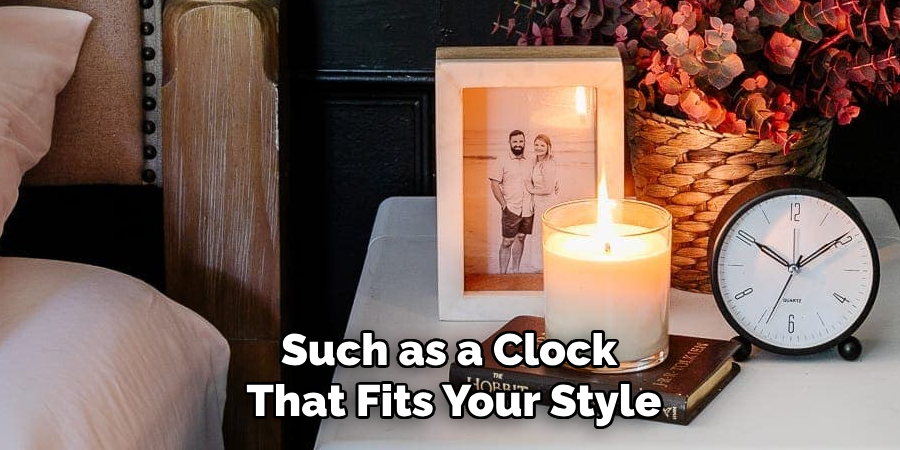
Tips for Small Nightstands
Maximizing space on small nightstands requires strategic planning and creativity. Start by selecting multifunctional items, such as a lamp with built-in USB ports or a decorative box that doubles as storage. These choices not only save space but also enhance the utility of your setup.
Limit the number of items on display to avoid clutter while maintaining style. Aim for a few meaningful pieces that reflect your personality rather than overcrowding the surface. Regularly reassess the contents of your nightstand to remove unnecessary items, ensuring you only keep essentials within reach. Consider using vertical storage, like a wall-mounted shelf above your nightstand, to keep frequently used items accessible while freeing up surface space. Finally, embrace a minimalist approach by choosing a cohesive color palette and design style, creating an uncluttered yet visually appealing nightstand that promotes calmness and relaxation.
Conclusion
In summary, following the key steps on how to decorate nightstand effectively involves a mix of functionality and creativity. Start by selecting essential items, incorporating decorative accessories, and layering heights and textures to create visual interest. Remember to balance aesthetics with practicality by ensuring frequently used items remain easily accessible. Personalizing your space with meaningful decors, such as cherished photographs or unique art pieces, can truly reflect your personality and style.
Don’t hesitate to experiment with different themes and arrangements, as this allows you to create a nightstand that evolves with your preferences. Ultimately, a well-decorated nightstand will enhance the visual appeal of your bedroom and contribute to a calm and organized atmosphere, encouraging relaxation and restful nights.
About the Author
Adrian Green, a lifelong woodworking enthusiast, shares his passion for the craft through The Woodenify Blog. With a foundation built on years of hands-on experience in his father’s woodworking shop, Adrian is dedicated to helping others learn and grow in the world of DIY woodworking. His approach to woodworking combines creativity, practicality, and a deep appreciation for the art of building with your own hands. Through his blog, he inspires individuals of all skill levels to embark on their own woodworking journeys, creating beautiful, functional pieces of furniture and décor.
Professional Focus
- Specializes in DIY woodworking projects, from furniture to home décor.
- Provides step-by-step guides and practical tutorials for woodworkers of all skill levels.
- Dedicated to helping readers build confidence and skill through easy-to-follow instructions and tips.
- Passionate about fostering a community of makers who can share, learn, and grow together.
Education History
- University of Craft and Design – Bachelor of Fine Arts (BFA) in Woodworking and Furniture Design
- Woodworking Apprenticeships – Extensive hands-on training with skilled craftsmen to refine carpentry and furniture making techniques.
- Online Courses & Masterclasses – Continued education in advanced woodworking techniques, design principles, and specialized tools
Expertise:
- DIY woodworking, carpentry, furniture making, and home décor projects.
- Creating accessible tutorials and guides for beginner to advanced woodworkers.
- Sharing the joys and satisfaction of woodworking, from raw materials to finished products.
